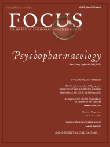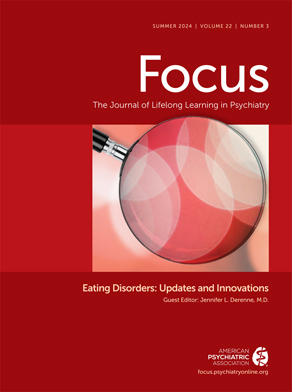No psychiatrist in 2006 needs to be told that the amount of new knowledge in psychopharmacology is overwhelming. The multiple journals which are available have now been supplemented by the internet, yielding a flow of information that is not only copious, but sometimes contradictory. Added to this cacophony are the multiple blogs which comment on the scientific literature, and representatives of the pharmaceutical industry who are eager to put their particular spin on the literature. How is a busy clinician to sort through all of this and stay current?
Teachers of psychopharmacology have essentially the same problem. A teacher cannot teach everything there is to know about psychotropic drugs, and can’t expect students to know about every study as soon as it appears. Like the clinician, the teacher must find ways to sort through the multiple studies in the literature, find important new aspects of the field, and make an assessment as to what is just a factoid and what is a fact that should be integrated into the curriculum. Then the teacher must find ways to convey the resultant knowledge in efficient and effective ways.
Fortunately, both the busy clinician and the teacher of psychopharmacology can develop a strategy which will allow a focused approach to teaching and learning. The strategy includes assessing need, “triaging” resources, developing a parsimonious and individualized approach to teaching/learning, and evaluating the results.
Prior to actualizing this strategy, however, it is important to understand everyone is her own best teacher, hence the title of this article. A practicing clinician is also a teacher, even if she has only one student (herself). The physician in pursuit of new knowledge cannot afford to passively listen to a CME lecture or a pharmaceutical company presentation now and then, and expect to be educated. Education is an active, participatory process, which requires work on the part of the physician, who in the final analysis is both teacher and the student.
Assessing need
Having adopted this mind set, the student/teacher should go about the business of discovering what he does and doesn’t already know. Residency training has provided the baseline knowledge and a context with which to learn new knowledge. But in a given person, the knowledge base may be spotty, and will have changed over time. Indeed, some things which we “knew for sure” in training, turn out not to be the case. And, of course, there are new areas of knowledge, which were not even a part of the knowledge base during our training. How does one go about assessing a student’s needs? (Again bearing in mind that you may be your only student?) There are external ways of going about this, using self assessment or other examinations. Examples are the FOCUS self assessment exam, the PIPE exam of the American College of Psychiatry, and for Board Certified physicians, the Examination in Advanced Psychopharmacology of the American Society of Clinical Psychopharmacology.
Another approach is the “journal club” approach. In this form of needs assessment, a group of clinicians discusses articles or their own cases; each person makes a note of areas in which they find themselves asking a lot of questions or in which they are hearing a number of new or unfamiliar facts. (In the proper atmosphere, the participants can also give their colleagues feedback on apparent areas of need.)
Another way for the clinician to assess need is to go through their case load, and make a note of cases in which they seem to be less effective or efficient. These cases may point to areas in which more education is needed. Similarly, there may be areas which are not represented in a caseload (e.g., particular diagnoses, genders, racial/ethnic groups, etc.). The clinician can ask herself whether this is because she feels less confident about patients in these groups, pointing therefore to an educational need.
Triaging resources and methods
Triaging means to look at the work to be done and prioritize it in such a way that one’s resources are most effectively utilized. This is also the case in examining how one is going to approach teaching/learning. As noted above, there are multiple sources of information and multiple ways to teach and learn. Making the decisions as to sources of information depends on several things. First, what sources do you trust to give accurate information? This question must be answered whether you are looking for textbooks, live or multimedia presentations, the internet, etc. A good start is looking for resources which carry the imprimatur of a board, or a medical society, or another source you know to be reliable.
Second, what resources are the most efficient for your purpose? A large textbook may be complete, but may be overwhelming. Similarly, reading every article in selected journals is time consuming and not very focused. One approach is to find review articles in areas of learning. Selectively reading particular articles in a recent text can also be useful. Or, you can go to a trusted CME web site and pick out lectures and materials which speak broadly to your topic of interest. Review courses that provide yearly updates on psychopharmacology, can also be helpful if they are focused sufficiently on your area of need.
Some clinicians have purchased the ASCP Model Psychopharmacology Curriculum and either alone, or with peers, reviewed an individual topic like body dysmorphic disorder, or an area (like mood disorder), or even a series of core psychopharmacology lectures.
Developing a parsimonious and individualized approach
Remember that you are your own best teacher, but only if you are clear about how you best learn. And remember that education is an active process. How can you best use your resources (e.g., time, money) to most effectively learn what you need to know? Here, it is important to assess whether you actually retain information which is delivered with particular methodologies. Some do learn well in lectures. But do you learn more that lasts if you have interaction with the speaker? Or if you follow up the lecture by reading review articles on the subject? Or if you meet with colleagues to discuss the new ideas presented? Bear in mind that if you don’t retain what’s taught, you’ve wasted your valuable time and money.
Another important aspect of the approach is how much repetition you require to learn something new. Do you retain new facts the first time, or do you need to hear it again? If you need repetition, perhaps on line courses which you can repeat several times are a good approach for you. Still another aspect is whether you are a verbal or visual learner. Some individuals must see the words in front of them. Others also need illustrations. All of these are important in developing a teaching/learning approach that works for you.
Evaluating the results
Finally, it is important to know whether or not you’ve been successful. The simplest way to find out is to repeat whatever you did for your assessment of need. But whatever you do, you must be painfully honest with yourself. If you didn’t really absorb what you needed to, you need to rethink your strategy. You may have to move to other methods of learning.
Conclusion
There is an old saying among teachers that you learn more than your students when you teach. That is, teachers are also students. The opposite is true as well. And this is particularly true when you’re dealing with your own self education. Although there clearly are many resources at hand to assess your need, plan your strategy, and evaluate the results, in the final analysis, you cannot rely on someone else to tell you how to approach your own education. Some “up front” time in making a focused plan will in the long run yield an educational experience which is both parsimonious and effective.

